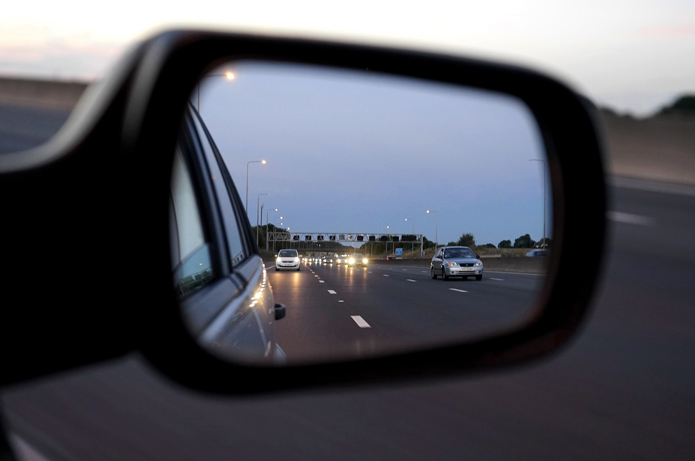What are blind spots?
Being aware of your vehicle’s blind spots
• What are blind spots?
• Blind spots checks before driving off
• Blind spot checks when on the move
• Blind spot mirrors/warning devices
What are driving blind spots?
Put simply, ‘blind spots’ are areas outside the vehicle that you cannot see from the driver’s seat because they are obscured by parts of the vehicle itself, whether viewed directly or indirectly, through its mirrors. Although mirrors allow you to view a wide angle of what’s behind your car, there are always sections that cannot be noticed in either the rear view or side mirrors. Likewise, when looking forward, the vehicle’s door pillars for example, can also impede your vision.
These blind spot areas are danger points and unfortunately, far too many accidents occur due to drivers failing to check their blind spots before they carry out any sort of manoeuvre once they are on the move, as they can easily hide a pedestrian, cyclist, motorcyclist or even another vehicle. It is, therefore, vital that as a driver, you are as aware as possible of these restrictions and their impact on your overall vision.
Driving instructors teach learner drivers where these blind spots are, as well as when to check them as a significant number of driving tests are failed because the learner did not check the appropriate blind spots before undertaking a manoeuvre. However, it is something that all drivers, new and experienced, should continually put into practice.
Blind spot checks before driving off
If you are parked with the passenger side of the car at the kerb, although it is best practice, it’s not actually essential to check the blind spots on the left before driving off. However, in this situation, the blind spots on the right must always be checked, by looking forward from both sides of the door pillar, checking the rear view and side mirrors, and by looking over your right shoulder to ensure there is no danger before setting off. It’s quite possible that a cyclist or a motorcyclist could be in the right side blind spot, which could lead to serious consequences if you set off into their path.
When setting off with the car parked with the driver’s side on to the kerb, obviously, the blind spots on the passenger side of the car should be checked, in the same manner.
It is often also worth a second check as you pull out on a busy road, because motorcycles can appear very quickly and cyclists can sometimes be near, but hidden behind parked cars, for example.
Blind spot checks when on the move
When you switch lanes on a motorway, dual carriageway or multi-lane road of any kind, the appropriate mirrors and blind spots must be checked before moving the car either left or right. Likewise if you overtake another vehicle on a single carriageway.
If you live in an area where there are many cyclists, your blind spots will need to be checked even more often than usual, because cyclists can often be unpredictable. How many times have you seen cyclists ignoring red lights and simply continuing on their way without any obvious regard for other vehicles or themselves, for example?
If you’ve recently overtaken a cyclist and then plan to make a left turn, you must not just look in your rear view mirror, but also your left side mirror, to locate the cyclist you’ve passed before making the manoeuvre. If you are unsure where the cyclist is, you must also look over your left shoulder and check the blind spot area to see if they are there. In every situation, but particularly where there are cyclists or motorcyclists, if you intend to change direction, you must check the blind spots, both front and rear, before you do so.
Blind spot mirrors/warning devices
Naturally, the correct positioning of your mirrors will help to reduce the size of the blind spot area, but as stated, this cannot completely eliminate the problem.
To help further, you can use additional mirrors that attach to your existing side mirrors, which can be purchased through most good automotive retail stores. These mirrors offer drivers a wider angle of side and rear vision. However, please bear in mind that even if these mirrors claim to cover blind spots, they cannot actually eliminate them and should simply be used as an extra observational aid.
Usefully, an increasing number of cars are now fitted with blind spot warning systems that will alert you, usually with a small light in your side mirrors or their housing and sometimes also audibly, if there is something in your rearward blind spot area.
Both blind spot mirrors and warning devices are very useful, but do not become complacent simply because you have something fitted to the car that helps. They are not infallible, so the advice is very much to continue to make regular blind spot checks when you drive and consider these added items as merely additional safety aids.

